Ted Rabinowitz's Blog, page 11
February 4, 2016
You know you've neglected your blogging when-
-your ancient post about mermaids has risen to the top of your eyeball stats once more.
But in the spirit of the Still-New Year and of feeding y'all some red-meat content you can use, here are some book recommendations if you're feeling cold, wet, and dreary this February.
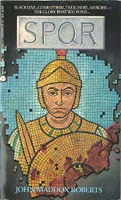 SPQR
- A murder mystery set in Ancient Rome in the years before Julius Caesar rises to power. Fast-moving, historically accurate and a lot of fun.
SPQR
- A murder mystery set in Ancient Rome in the years before Julius Caesar rises to power. Fast-moving, historically accurate and a lot of fun.
 Robots Have No Tails - a collection of old-school shaggy-dog science fiction stories written by Henry Kuttner, one of the forgotten geniuses of the genre. The stories center around Gallagher, an alcoholic engineer who can never remember, sober, the purpose of the inventions he created while drunk. Written in the '40s and '50s, and utterly un-PC in its treatment of addiction. Nevertheless...
Robots Have No Tails - a collection of old-school shaggy-dog science fiction stories written by Henry Kuttner, one of the forgotten geniuses of the genre. The stories center around Gallagher, an alcoholic engineer who can never remember, sober, the purpose of the inventions he created while drunk. Written in the '40s and '50s, and utterly un-PC in its treatment of addiction. Nevertheless...
Earth Is Room Enough - Seventeen short stories by the master, Isaac Asimov. They all take place on Earth, and only a few of them have robots. Enough hits to make the misses worthwhile.
 The Age of Unreason - A series beginning with Newton's Cannon and continuing with A Calculus of Angels, Empire of Unreason, and The Shadows of God. An alternate history in which Newton is more successful as an alchemist than as a physicist. Brilliantly researched, full of fascinatingly flawed historical characters, from Ben Franklin to Peter the Great.
The Age of Unreason - A series beginning with Newton's Cannon and continuing with A Calculus of Angels, Empire of Unreason, and The Shadows of God. An alternate history in which Newton is more successful as an alchemist than as a physicist. Brilliantly researched, full of fascinatingly flawed historical characters, from Ben Franklin to Peter the Great.
And now, a couple of disses.
I've read two of the most-discussed SF books of the last couple of years: Ancillary Justice and The Three-Body Problem. And I say..."meh." [SPOILERS AHEAD]
Both books are ambitious in ways that my above recommends are not. And both have some really interesting ideas. Ancillary's treatment of the question of individuality and the group mind is handled in a way that was both original and chilled my spine a bit. TBP's use of China's Cultural Revolution, the seven untouched dimensions of particle physics, and what it might take for someone to sell out the whole human race were all new...and if you can't have new in SF, where can you have it?
But there were long stretches in both books that made my eyes glaze over a little bit. In TBP it was the narrative time spent inside a VR game that's a recruiting device for the aliens. (Not only is any literary "holodeck" experience mostly meaningless, in these sequences the protagonist completely passive - it's not clear how he "wins" to the next level.) In Ancillary it's the time that...frankly, I can't even remember. (I read Ancillary Justice a year and a half ago, and it didn't stick.)
So...there you have it. More to come.
But in the spirit of the Still-New Year and of feeding y'all some red-meat content you can use, here are some book recommendations if you're feeling cold, wet, and dreary this February.
 SPQR
- A murder mystery set in Ancient Rome in the years before Julius Caesar rises to power. Fast-moving, historically accurate and a lot of fun.
SPQR
- A murder mystery set in Ancient Rome in the years before Julius Caesar rises to power. Fast-moving, historically accurate and a lot of fun. Robots Have No Tails - a collection of old-school shaggy-dog science fiction stories written by Henry Kuttner, one of the forgotten geniuses of the genre. The stories center around Gallagher, an alcoholic engineer who can never remember, sober, the purpose of the inventions he created while drunk. Written in the '40s and '50s, and utterly un-PC in its treatment of addiction. Nevertheless...
Robots Have No Tails - a collection of old-school shaggy-dog science fiction stories written by Henry Kuttner, one of the forgotten geniuses of the genre. The stories center around Gallagher, an alcoholic engineer who can never remember, sober, the purpose of the inventions he created while drunk. Written in the '40s and '50s, and utterly un-PC in its treatment of addiction. Nevertheless...Earth Is Room Enough - Seventeen short stories by the master, Isaac Asimov. They all take place on Earth, and only a few of them have robots. Enough hits to make the misses worthwhile.
 The Age of Unreason - A series beginning with Newton's Cannon and continuing with A Calculus of Angels, Empire of Unreason, and The Shadows of God. An alternate history in which Newton is more successful as an alchemist than as a physicist. Brilliantly researched, full of fascinatingly flawed historical characters, from Ben Franklin to Peter the Great.
The Age of Unreason - A series beginning with Newton's Cannon and continuing with A Calculus of Angels, Empire of Unreason, and The Shadows of God. An alternate history in which Newton is more successful as an alchemist than as a physicist. Brilliantly researched, full of fascinatingly flawed historical characters, from Ben Franklin to Peter the Great.And now, a couple of disses.
I've read two of the most-discussed SF books of the last couple of years: Ancillary Justice and The Three-Body Problem. And I say..."meh." [SPOILERS AHEAD]
Both books are ambitious in ways that my above recommends are not. And both have some really interesting ideas. Ancillary's treatment of the question of individuality and the group mind is handled in a way that was both original and chilled my spine a bit. TBP's use of China's Cultural Revolution, the seven untouched dimensions of particle physics, and what it might take for someone to sell out the whole human race were all new...and if you can't have new in SF, where can you have it?
But there were long stretches in both books that made my eyes glaze over a little bit. In TBP it was the narrative time spent inside a VR game that's a recruiting device for the aliens. (Not only is any literary "holodeck" experience mostly meaningless, in these sequences the protagonist completely passive - it's not clear how he "wins" to the next level.) In Ancillary it's the time that...frankly, I can't even remember. (I read Ancillary Justice a year and a half ago, and it didn't stick.)
So...there you have it. More to come.
Published on February 04, 2016 19:31
January 15, 2016
"The Saturday Dance"
A few years ago, my Voudoun short story The Saturday Dance appeared in Lore magazine.
Now, thanks to the brilliant folks at the Brooklyn Speculative Fiction Writers Group, it's been turned into an audio performance on their podcast, Kaleidocast. Take a listen!
Now, thanks to the brilliant folks at the Brooklyn Speculative Fiction Writers Group, it's been turned into an audio performance on their podcast, Kaleidocast. Take a listen!
Published on January 15, 2016 18:25
January 13, 2016
Thunderbirdland
When I was a kid, the closest thing to science-fiction TV for kids was a show called Thunderbirds. It was a puppet show, and if you've seen Matt Parker and Trey Stone's Team America, you've seen their parody of it.
It was a fundamentally goofy show, but for me, it was always a sketch of what the Andersons wanted to do, but couldn't in live action. And I thought the architecture was the coolest thing I had ever seen in my young life - what the '60s thought the future would be.
Well, living in New York these days - particularly on the Far West Side - is like living in Thunderbirdland.




Thunderbirds are go!
It was a fundamentally goofy show, but for me, it was always a sketch of what the Andersons wanted to do, but couldn't in live action. And I thought the architecture was the coolest thing I had ever seen in my young life - what the '60s thought the future would be.
Well, living in New York these days - particularly on the Far West Side - is like living in Thunderbirdland.




Thunderbirds are go!
Published on January 13, 2016 19:23
January 3, 2016
December 31, 2015
Happy Hogmanay!
 Yes, it's that time of year again, Hogmanay. When we don our mistletoe Speedos and Hogmanay drinking boots in time for the Hogman and his Merry Piglets to deliver drams of restorative single malt to all the good little child-free partygoers who have been extra happy this year.
Yes, it's that time of year again, Hogmanay. When we don our mistletoe Speedos and Hogmanay drinking boots in time for the Hogman and his Merry Piglets to deliver drams of restorative single malt to all the good little child-free partygoers who have been extra happy this year.Did you hold back your bestie's hair when she worshipped the porcelain god?
Did you snake the car keys from your wingman's back pocket when he went three over the limit in Tampa?
Did you update your clubtard Biffle's NYE sunglasses to 2016?
Then you will sip of the Hogman's best whiskey!
May your headache be mild and your hangover light!
Happy Hogmanay!
Published on December 31, 2015 10:47
December 21, 2015
The Force Awakens: Lots of Fan Service = Fewer Fans [SPOILERS]
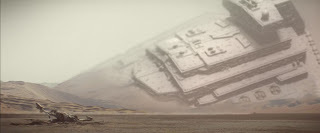 I liked Star Wars: The Force Awakens. But I didn't luuurrve it. Please, rabid fans, don't egg my car.
I liked Star Wars: The Force Awakens. But I didn't luuurrve it. Please, rabid fans, don't egg my car.I don't think I'm alone. I saw the movie Sunday night in a packed theatre, and there was a relatively subdued audience reaction...some scattered applause for the first appearance of Han Solo and R2-D2. That's about it.
For the record, TFA has a lot of good. John Boyega as Finn makes a good protagonist. He hits the right balance between comedy and drama, and he's one of those lucky actors who's immediately likable. (And, from a story perspective, Finn's origin is compelling.) Oscar Isaac, who plays Poe Dameron, Fin's rescuee, has the same kind of charisma - so much so that the Fin/Poe friendship is more interesting than Fin's possible relationship with Rey (Daisy Ridley), the Force to be reckoned with in this generation of Jedi.
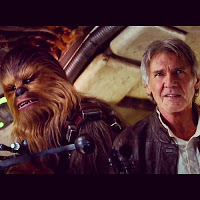 TFA also has a good, sensible answer for what happens when someone who is clearly not a Jedi uses a light saber. Answer: They can use it, but a real Jedi will clean their clock. Speaking of which, there is more than enough X-Wing and light-saber action for even the most die-hard fan.
TFA also has a good, sensible answer for what happens when someone who is clearly not a Jedi uses a light saber. Answer: They can use it, but a real Jedi will clean their clock. Speaking of which, there is more than enough X-Wing and light-saber action for even the most die-hard fan.Finally, it's wonderful to see Harrison Ford, Carrie Fisher and Mark Hamill again, older but still so important and so good that their gravity practically warps the space-time of any scene they're in.
But...
 The JJ Abrams formula is to keep the action coming - at the expense of time to breathe, to reflect, to build character and relationship and new worlds. For instance, the first Star Wars movie took time to show Luke being trained. That explained the Force to us; it helped us understand the limits of a Jedi's capabilities; and it built a genuine relationship between Luke and Obi-Wan. That relationship was vital. If it had been treated in a cursory way, Obi-Wan's death wouldn't have been nearly as powerful as it was.
The JJ Abrams formula is to keep the action coming - at the expense of time to breathe, to reflect, to build character and relationship and new worlds. For instance, the first Star Wars movie took time to show Luke being trained. That explained the Force to us; it helped us understand the limits of a Jedi's capabilities; and it built a genuine relationship between Luke and Obi-Wan. That relationship was vital. If it had been treated in a cursory way, Obi-Wan's death wouldn't have been nearly as powerful as it was.But TFA can't be bothered with something so low-key and time-consuming. Rey magically picks up her Jedi skills after one Force-enhanced interrogation by Kylo Ren, the evil Jedi of this installment. You could argue that we've already seen Jedis trained ad nauseam. Fair enough. Then why choose as your central character a young woman who doesn't yet know she's a Jedi? If you don't want any more Jedi training, then don't write yet another Star Wars coming-of-age story.
Leaving blast-shield helmets and training drones to one side, TFA has at least three stories that could each fuel a movie all by itself [spoilers] - Finn's finding his soul and deserting from the Storm Troopers; Han's attempt to recover his son; and the search for Luke - but they are shoehorned together and forced to take a backseat to yet another strafing run against a Giant Sphere of Death. The result is that we are invested in none of these the way we were in Star Wars (one basic story) and Empire Strikes Back (two basic stories). We don't have time to connect with any of the new characters the way we did with the old ones.
It's a big, big problem.
Oh...and Kylo Ren is a weenie.
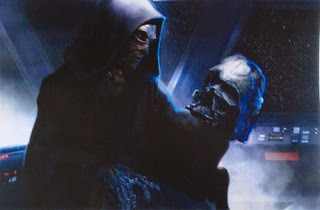
Published on December 21, 2015 17:25
December 17, 2015
New York: It's One Crazy Concrete Jungle, Bro
Published on December 17, 2015 18:51
December 16, 2015
Status Update for "The Expanse" [SPOILERS]
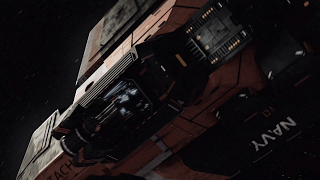 Status Update:
Status Update:From Cautiously Optimistic
To Hopefully Pessimistic
I've now seen episodes 1-4 of The Expanse on Syfy.
Now, I don't want to be that guy...
You know, the one who's always going on about how the book was better.
Or the original play was better.
Or the original movie was better.
Or can't understand why they changed X, Y, Z.
But...let's just say that the showrunners have been making some choices that I don't understand.
The second episode is mostly the five survivors of the Canterbury trapped on a crippled shuttlecraft, trying to be rescued. Other stuff happens - Miller uncovers water thieves, Avasarala does politico stuff - but the life and death happens onboard the Knight.
Except it doesn't, really. In the books, the voyage on the Knight is just five days of claustrophobic inconvenience before the crew is rescued by the MCRN Donnager, a Martian dreadnought. In the series, the Knight is bombarded by debris from the wreckage of the Cant. Its hatch is blown off. Half its air is gone. Finally, its radio transmitter array is shot to hell and must be repaired from the outside. Meanwhile, Naomi and Amos square off against Holden while everyone expresses contempt for Shed Garvey who risks his own life to save Alex Kamal's. Dramatic, right?
Not really. That's the problem. It feels...injected. Like a baker pumping up a pastry with air. Not because everything ends up pretty much where it began - the crew makes it to the Donnager; Miller rousts a bunch of water thieves; Havelock is shanked, but lives - but because the showrunners are changing the characters.
The books on some level are about idealism (Holden and, in a monstrous way, Protogen) vs. realism (Miller and pretty much everybody else). They're also about the limits of hard-won experience when it comes up agains the utterly new. For that to work on the show, the showrunners have to respect the characters, because they express the themes. Instead, the runners are changing the characters in subtle but important ways.
The keynote of the characters in the books is that they're pros. They may be flawed...deeply flawed...but they know their jobs. Miller may be a failure at Star Helix, but he can be a good detective when he wants to. Amos may be terrifying and damaged, but he's a good mechanic. Alex is a failure as a family man, but he's a professionally trained combat pilot. Naomi is a go-to engineer and admin. Avasarala is smarter than the Secretary General.
The showrunners seem to be walking away from that for the sake of draaaaama. In the scenes on the shuttle, the survivors of the Canterbury go to pieces almost immediately, and only then pull themselves back together, only to be driven apart again by the obvious tactics of the overly hostile Martian crew of the Donnager. It's dramatic, but in an over-the-top, not-quite verisimilitudinous kind of way. And it makes us lose a little respect for the crew.
Then there's the minor stuff, like everybody on the Donnager bridge strapping down to avoid injury...except the captain of the ship. Or the way that she's just sort of standing there casually, sipping her water, while unidentified ships come swooping in. There's the way Miller extracts an implant from a day-old corpse without bothering to put on gloves. There's the fact that Avasarala handles torture sessions personally. Or the fact that the Canterbury's old XO accumulates a huge stash of rifles and handguns in his room without anybody knowing. Or the way the representative of the LDS Church tries to cancel the Nauvoo contract with Fred Johnson in the middle of an elevator, and then gets intimidated and backs down, making the entire thing pointless. Or...
Hell with it. The last episode was better than the one where they're captured. Maybe it will get better still.
Published on December 16, 2015 18:34
December 13, 2015
Some Paleo-SF References You Might Have Missed in The Expanse
The Expanse books were written by two hard-core SF fans. They not only know their science; they know earlier SF, and they are happy to throw in the occasional homage to Those Who Came Before. If you have absorbed all your sci-fi from ST:TNG and Halo, you might have missed a few of them. Here are some of the ones I've caught so far.
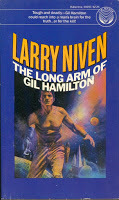 1. Larry Niven: Niven wrote a lot of excellent "hard" science fiction in the '70s and '80s. Some of it has been OTBE'd (Overtaken By Events) but it's still fun. A. He invented the term "Belter."B. He came up with the "Belter crest" - a high Mohawk to which The Expanse pays tribute with the topknot fades of Naomi Nagata and Detective Miller.C. The "Forgotten Arm" mentioned by Miller when he interviews the prostitute in Episode 1 may be a reference to Niven's book The Long Arm of Gil Hamilton, about a Belter who loses an arm, has it replaced, but retains a body-image memory of the old arm that he can use for telekinesis...invisible, and very dangerous. (On second thought, this one seems a little tenuous for me.)D. Niven also invented "Confinement Asteroid" - a place where Belter kids could grow up in relatively high gravity to avoid the "long bone" syndrome we see in the series.
1. Larry Niven: Niven wrote a lot of excellent "hard" science fiction in the '70s and '80s. Some of it has been OTBE'd (Overtaken By Events) but it's still fun. A. He invented the term "Belter."B. He came up with the "Belter crest" - a high Mohawk to which The Expanse pays tribute with the topknot fades of Naomi Nagata and Detective Miller.C. The "Forgotten Arm" mentioned by Miller when he interviews the prostitute in Episode 1 may be a reference to Niven's book The Long Arm of Gil Hamilton, about a Belter who loses an arm, has it replaced, but retains a body-image memory of the old arm that he can use for telekinesis...invisible, and very dangerous. (On second thought, this one seems a little tenuous for me.)D. Niven also invented "Confinement Asteroid" - a place where Belter kids could grow up in relatively high gravity to avoid the "long bone" syndrome we see in the series.
 2. Robert Heinlein: A writer who probably needs no introduction. A. At one point, Holden's navigator and lover Nygard talks about the Knight shuttle flying "teakettle" to the Scopuli. Teakettle is a term Heinlein invented to distinguish notional fission-propulsion rockets from more powerful ships powered by fusion and direct matter conversion ("torch ships"). Atomic ships were "teakettles" because their fission piles heated water or other reaction mass to boiling and shot them out the back for propulsion.B. The Ceres Belter Creole may also be a nod to the patois spoken by Heinlein's characters in his famous (or notorious) novel The Moon Is A Harsh Mistress. Those characters, not coincidentally, face the same political situation as the Ceres residents: They can never go back to Earth, and Earth forces them to provide vital resources and pays them nothing in return.
2. Robert Heinlein: A writer who probably needs no introduction. A. At one point, Holden's navigator and lover Nygard talks about the Knight shuttle flying "teakettle" to the Scopuli. Teakettle is a term Heinlein invented to distinguish notional fission-propulsion rockets from more powerful ships powered by fusion and direct matter conversion ("torch ships"). Atomic ships were "teakettles" because their fission piles heated water or other reaction mass to boiling and shot them out the back for propulsion.B. The Ceres Belter Creole may also be a nod to the patois spoken by Heinlein's characters in his famous (or notorious) novel The Moon Is A Harsh Mistress. Those characters, not coincidentally, face the same political situation as the Ceres residents: They can never go back to Earth, and Earth forces them to provide vital resources and pays them nothing in return.
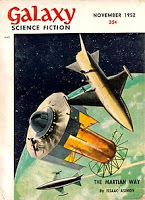 3. Isaac Asimov: Asimov was one of the first to write about mining the Saturn system for water ice in his story The Martian Way. Holden's original ship, the ice-hauler Canterbury, owes Prof. Isaac a nod. The Martian Way also deals with the some of the same questions of interplanetary economics as The Expanse - the intersection of nationalism and resource-scarcity economics - and outlined the growing sense of a new Mars-based patriotism. These are all themes you'll encounter in The Expanse.
3. Isaac Asimov: Asimov was one of the first to write about mining the Saturn system for water ice in his story The Martian Way. Holden's original ship, the ice-hauler Canterbury, owes Prof. Isaac a nod. The Martian Way also deals with the some of the same questions of interplanetary economics as The Expanse - the intersection of nationalism and resource-scarcity economics - and outlined the growing sense of a new Mars-based patriotism. These are all themes you'll encounter in The Expanse.
Update: You could call most of these things "homage," but maybe a more accurate term is "prior art." Certain ideas - like the Saturnian ice - are obvious conclusions from existing situations. Referring to them when writing about interplanetary (as opposed to interstellar) travel is just building on the foundations laid beforehand by folks like Clarke, Asimov, and Heinlein.
 1. Larry Niven: Niven wrote a lot of excellent "hard" science fiction in the '70s and '80s. Some of it has been OTBE'd (Overtaken By Events) but it's still fun. A. He invented the term "Belter."B. He came up with the "Belter crest" - a high Mohawk to which The Expanse pays tribute with the topknot fades of Naomi Nagata and Detective Miller.C. The "Forgotten Arm" mentioned by Miller when he interviews the prostitute in Episode 1 may be a reference to Niven's book The Long Arm of Gil Hamilton, about a Belter who loses an arm, has it replaced, but retains a body-image memory of the old arm that he can use for telekinesis...invisible, and very dangerous. (On second thought, this one seems a little tenuous for me.)D. Niven also invented "Confinement Asteroid" - a place where Belter kids could grow up in relatively high gravity to avoid the "long bone" syndrome we see in the series.
1. Larry Niven: Niven wrote a lot of excellent "hard" science fiction in the '70s and '80s. Some of it has been OTBE'd (Overtaken By Events) but it's still fun. A. He invented the term "Belter."B. He came up with the "Belter crest" - a high Mohawk to which The Expanse pays tribute with the topknot fades of Naomi Nagata and Detective Miller.C. The "Forgotten Arm" mentioned by Miller when he interviews the prostitute in Episode 1 may be a reference to Niven's book The Long Arm of Gil Hamilton, about a Belter who loses an arm, has it replaced, but retains a body-image memory of the old arm that he can use for telekinesis...invisible, and very dangerous. (On second thought, this one seems a little tenuous for me.)D. Niven also invented "Confinement Asteroid" - a place where Belter kids could grow up in relatively high gravity to avoid the "long bone" syndrome we see in the series. 2. Robert Heinlein: A writer who probably needs no introduction. A. At one point, Holden's navigator and lover Nygard talks about the Knight shuttle flying "teakettle" to the Scopuli. Teakettle is a term Heinlein invented to distinguish notional fission-propulsion rockets from more powerful ships powered by fusion and direct matter conversion ("torch ships"). Atomic ships were "teakettles" because their fission piles heated water or other reaction mass to boiling and shot them out the back for propulsion.B. The Ceres Belter Creole may also be a nod to the patois spoken by Heinlein's characters in his famous (or notorious) novel The Moon Is A Harsh Mistress. Those characters, not coincidentally, face the same political situation as the Ceres residents: They can never go back to Earth, and Earth forces them to provide vital resources and pays them nothing in return.
2. Robert Heinlein: A writer who probably needs no introduction. A. At one point, Holden's navigator and lover Nygard talks about the Knight shuttle flying "teakettle" to the Scopuli. Teakettle is a term Heinlein invented to distinguish notional fission-propulsion rockets from more powerful ships powered by fusion and direct matter conversion ("torch ships"). Atomic ships were "teakettles" because their fission piles heated water or other reaction mass to boiling and shot them out the back for propulsion.B. The Ceres Belter Creole may also be a nod to the patois spoken by Heinlein's characters in his famous (or notorious) novel The Moon Is A Harsh Mistress. Those characters, not coincidentally, face the same political situation as the Ceres residents: They can never go back to Earth, and Earth forces them to provide vital resources and pays them nothing in return. 3. Isaac Asimov: Asimov was one of the first to write about mining the Saturn system for water ice in his story The Martian Way. Holden's original ship, the ice-hauler Canterbury, owes Prof. Isaac a nod. The Martian Way also deals with the some of the same questions of interplanetary economics as The Expanse - the intersection of nationalism and resource-scarcity economics - and outlined the growing sense of a new Mars-based patriotism. These are all themes you'll encounter in The Expanse.
3. Isaac Asimov: Asimov was one of the first to write about mining the Saturn system for water ice in his story The Martian Way. Holden's original ship, the ice-hauler Canterbury, owes Prof. Isaac a nod. The Martian Way also deals with the some of the same questions of interplanetary economics as The Expanse - the intersection of nationalism and resource-scarcity economics - and outlined the growing sense of a new Mars-based patriotism. These are all themes you'll encounter in The Expanse.Update: You could call most of these things "homage," but maybe a more accurate term is "prior art." Certain ideas - like the Saturnian ice - are obvious conclusions from existing situations. Referring to them when writing about interplanetary (as opposed to interstellar) travel is just building on the foundations laid beforehand by folks like Clarke, Asimov, and Heinlein.
Published on December 13, 2015 20:30
A Quick Note on My Note on "The Expanse"
By now, Syfy has managed to garner a lot of very positive buzz from reviewers for The Expanse. I don't begrudge them that. I think making the first episode as widely available as they have - not just on their website, but for free on-demand viewing across cable providers, etc. - is both clever marketing and a nice gesture to potential fans.
But to be clear: The pro reviewers have seen (I believe) the entire first season of the show. I'm not one of them. My opinions so far have been based entirely on the only episode I've been able to see - Episode One. As the show progresses the opinion may change, mutate, become more refined, or stay completely the same.
We shall see.
But to be clear: The pro reviewers have seen (I believe) the entire first season of the show. I'm not one of them. My opinions so far have been based entirely on the only episode I've been able to see - Episode One. As the show progresses the opinion may change, mutate, become more refined, or stay completely the same.
We shall see.
Published on December 13, 2015 19:55




